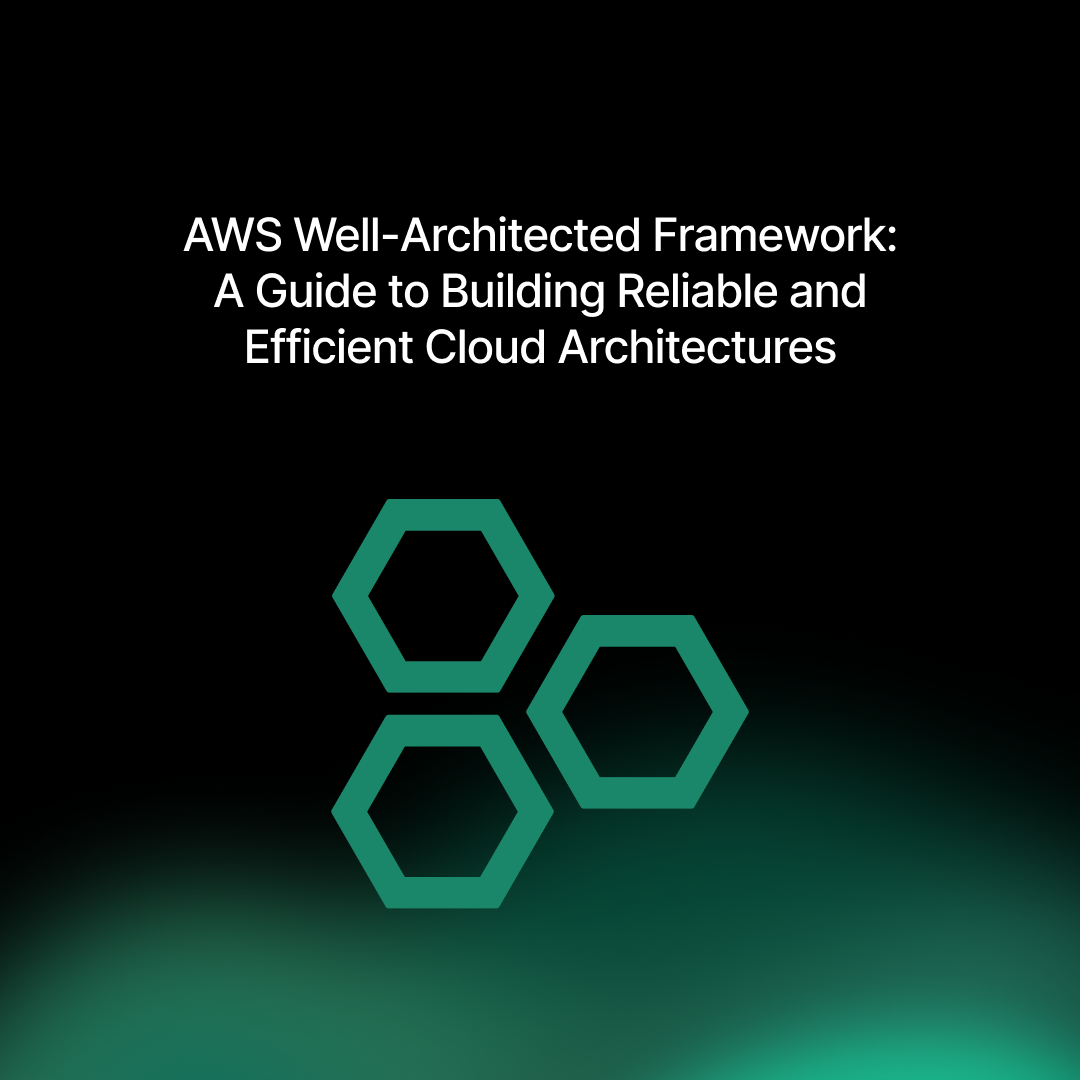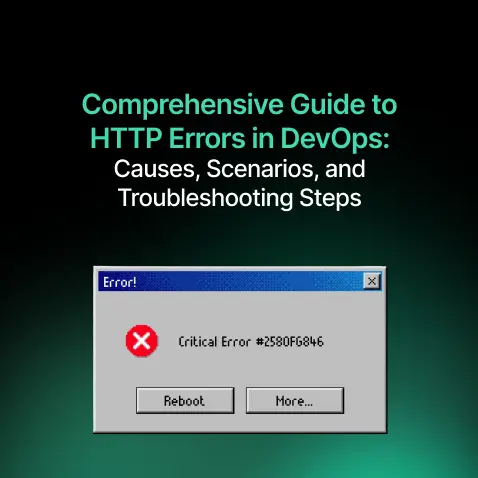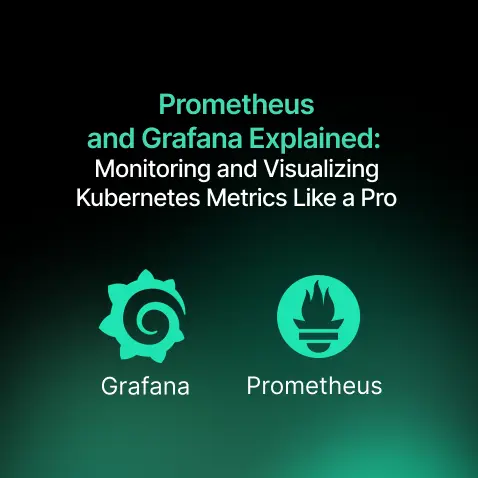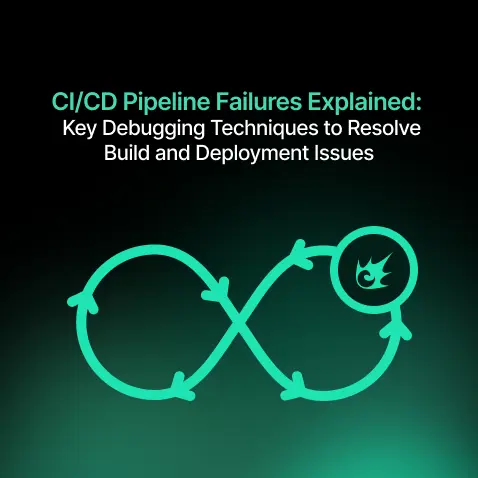AWS Well-Architected Framework: A Guide to Building Reliable and Efficient Cloud Architectures
- Nitin Yadav
- Knowledge
About

Industries
- AWS, AWS WELL ARCHITECTED REVIEW
Share Via
Introduction
The AWS Well-Architected Framework is a comprehensive set of best practices, principles, and evaluation guidelines designed to help businesses build robust, scalable, and cost-effective cloud architectures. By leveraging this framework, organizations can align their cloud systems with AWS best practices, ensuring reliability, security, and efficiency while optimizing costs.
This guide explores the six pillars of the AWS Well-Architected Framework, their significance, and how they empower businesses to design high-performing cloud solutions.
What is the AWS Well-Architected Framework?
The AWS Well-Architected Framework provides a structured approach to designing and evaluating cloud workloads. It includes design principles, key concepts, and prescriptive guidance to help businesses:
- Measure the efficiency of their cloud architectures.
- Identify areas for improvement.
- Implement architectural best practices.
Whether you’re migrating to AWS or optimizing existing workloads, the framework equips you with tools and questions to ensure that your systems are reliable, secure, and capable of adapting to changing demands.
The Six Pillars of the AWS Well-Architected Framework
1. Operational Excellence
Focus: Efficiently operate and monitor systems to deliver business value and improve processes.
Key practices include:
- Prepare: Use tools like AWS Config to enforce compliance.
- Operate: Implement Amazon CloudWatch for system monitoring and alerts.
- Evolve: Regularly review and refine operational procedures.
Key AWS Tools:
- AWS CloudFormation for infrastructure templates.
- Amazon Elasticsearch Service for data insights.
2. Security
Focus: Protect data, systems, and assets while minimizing risks.
Key practices include:
- Implementing Identity and Access Management (IAM) with multi-factor authentication.
- Using AWS CloudTrail and Amazon GuardDuty for monitoring and threat detection.
- Encrypting data at rest and in transit with AWS Key Management Service (KMS).
Key AWS Tools:
- IAM for secure access control.
- Amazon VPC for network protection.
- AWS Shield and AWS WAF for defense against attacks.
3. Reliability
Focus: Ensure systems can recover from disruptions and meet business demands.
Key practices include:
- Foundations: Use AWS Trusted Advisor and Amazon VPC for foundational reliability.
- Failure Management: Enable automatic recovery with AWS Auto Scaling and Amazon S3 backups.
- Change Management: Track system changes with AWS CloudTrail.
Key AWS Tools:
- Amazon CloudWatch for monitoring.
- AWS Lambda for automated responses.
- AWS Auto Scaling for resource scalability.
4. Performance Efficiency
Focus: Use resources efficiently to meet system requirements and scale with demand.
Key practices include:
- Selecting appropriate AWS services such as Amazon RDS for databases and Amazon S3 for storage.
- Monitoring performance with Amazon CloudWatch.
- Balancing trade-offs with tools like Amazon ElastiCache for caching.
Key AWS Tools:
- Amazon CloudFront for content delivery.
- AWS Direct Connect for optimized network performance.
5. Cost Optimization
Focus: Minimize costs by eliminating unnecessary resources and optimizing usage.
Key practices include:
- Financial Management: Track expenses with AWS Cost Explorer and AWS Budgets.
- Resource Optimization: Use AWS Trusted Advisor to identify unused resources.
- Matching Supply and Demand: Implement Auto Scaling for dynamic resource allocation.
Key AWS Tools:
- AWS Cost Explorer for budget insights.
- AWS Savings Plans for cost reduction.
6. Sustainability
Focus: Minimize environmental impact by optimizing cloud resources.
Key practices include:
- Using Auto Scaling and Elastic Load Balancing to align resource usage with demand.
- Selecting energy-efficient regions through AWS Global Infrastructure.
- Optimizing data patterns with Amazon S3 and Amazon FSx.
Key AWS Tools:
- AWS Compute Optimizer for efficiency recommendations.
- Amazon EC2 Auto Scaling for resource management.
How to Use the AWS Well-Architected Framework
Businesses can leverage the AWS Well-Architected Framework by:
- Reviewing their existing cloud workloads against the six pillars.
- Answering key evaluation questions, such as:
- “How do you protect your data at rest?”
- “How do you monitor and manage system performance?”
- Implementing recommendations to address gaps and improve system design.
Benefits of the AWS Well-Architected Framework
- Improved Reliability: Design systems that can recover from failures and scale with demand.
- Enhanced Security: Protect sensitive data with AWS’s robust security tools.
- Cost Savings: Optimize resource usage to avoid unnecessary expenses.
- Operational Excellence: Streamline processes for continuous improvement.
- Sustainability: Reduce environmental impact by optimizing resource consumption.
Conclusion
The AWS Well-Architected Framework is a powerful resource for businesses aiming to build reliable, secure, and cost-efficient cloud architectures. By adhering to its six pillars and leveraging AWS tools, organizations can align their cloud infrastructure with best practices, ensuring long-term success and adaptability in a dynamic IT landscape.
Ready to optimize your cloud architecture? Let SquareOps help you implement the AWS Well-Architected Framework to achieve unparalleled efficiency and scalability.
Frequently asked questions
The AWS Well-Architected Framework is a set of best practices for designing and running efficient, secure, and reliable cloud workloads on AWS.
The six pillars are Operational Excellence, Security, Reliability, Performance Efficiency, Cost Optimization, and Sustainability.
It helps businesses measure and improve their cloud architectures by providing design principles, best practices, and evaluation questions.
This pillar focuses on monitoring systems, delivering business value, and continuously improving processes using tools like AWS CloudFormation and Amazon CloudWatch.
The Security pillar emphasizes data protection, identity management, and incident response using AWS services like IAM, AWS CloudTrail, and AWS Shield.
The Reliability pillar ensures that systems can recover from failures and meet demand changes using tools like Amazon CloudWatch, AWS Auto Scaling, and AWS Lambda.
This pillar focuses on optimizing computing resources and monitoring workloads using services like Amazon EC2, Amazon CloudFront, and AWS Direct Connect.
The Sustainability pillar focuses on reducing environmental impacts by optimizing workloads and resource utilization using services like AWS Elastic Beanstalk and Auto Scaling.
This pillar emphasizes resource efficiency, cost monitoring, and financial management with tools like AWS Cost Explorer, AWS Budgets, and Auto Scaling.
Businesses can use it by reviewing their architecture against the framework’s principles and answering evaluation questions to identify areas for improvement.
Related Posts

Comprehensive Guide to HTTP Errors in DevOps: Causes, Scenarios, and Troubleshooting Steps
- Blog

Trivy: The Ultimate Open-Source Tool for Container Vulnerability Scanning and SBOM Generation
- Blog

Prometheus and Grafana Explained: Monitoring and Visualizing Kubernetes Metrics Like a Pro
- Blog

CI/CD Pipeline Failures Explained: Key Debugging Techniques to Resolve Build and Deployment Issues
- Blog

DevSecOps in Action: A Complete Guide to Secure CI/CD Workflows
- Blog

AWS WAF Explained: Protect Your APIs with Smart Rate Limiting
- Blog

